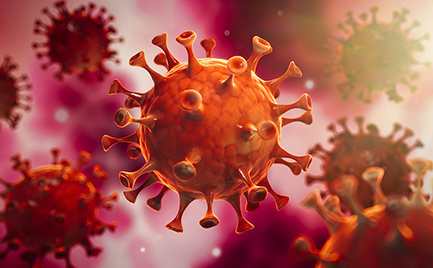In response to COVID-19 at this tertiary cardiac centre, based on triaged risk, the number of patients on remote monitoring (RM) increased 1.75-fold, from 4,000 to 7,000 (55% of the total patient population). Pre-pandemic, this centre gave RM to high-voltage devices only. RM for all device patients aligns with NHS England guidance to reduce outpatient (OP) visits by 25%, increase patient-initiated follow-up (FU) and provide equitable, timely access to care. At this centre, the increase in RM led to a 2.4-fold increase in transmissions (3,600 per month), of which, on average, 50% are non-actionable. Total device clinic activity, face to face (F2F) plus RM, is 110% of 2019 levels and the 2022/2023 104% elective recovery target pushing lab utilisation is also stretching Cardiac Science (CS) resource.
With a national shortage of CS and no capital funding for workforce, a strategy is vital to support demand and the change in practice to RM, whilst maintaining quality of care and staff wellbeing.
The priorities to deliver this are recruitment, training, retention and optimisation of CS resource. To optimise CS time, this centre reviewed RM workflows and identified processes that are now performed by non-clinical staff. This includes checking in transmissions successfully received; contacting patients who have missed their scheduled transmission, and signposting and educating disconnected patients. New patient communication channels have also facilitated access to appropriate guidance. A proposed pilot sees a clinical support worker initiating RM post-implant; this would release 0.5 WTE CS, improve inpatient time to discharge and provide consistent patient education.
Utilising a RM alert-driven FU model has been demonstrated as effective and efficient. Using this strategy with extended routine FU intervals for appropriate patients, we estimate routine OP attendance will reduce to 85%. This in turn reduces carbon emissions, reduces patient and transport cost, and increases capacity for urgent F2F review and specialist device clinics. Specialist device clinics provide individualised patient management, improve patient experience, promote retention of CS and better utilise available medical cover.
Alert-driven FU relies on consistent connectivity so a robust process for minimising the number of disconnected patients is required first; the target to effectively control the risk is <5% disconnected. This centre has reduced disconnection rate from 17% to 10% (700 patients) with data cleaning, contacting disconnected patients and support from industry. Consistent 0.4 WTE clerical support is required to track patients and arrange F2F education for missed transmissions. Eligibility criteria have been created to ensure RM enrolment of appropriate patients.
The next phase focuses on reducing inappropriate transmissions and non-actionable alerts to 20% by: targeting patients with a high volume of unscheduled transmissions; improving patient education; developing guidance on tailoring RM alerts; and reviewing false-positive alerts for each manufacturer. To ensure our approach is evidence-based, this centre is collaborating with industry on data dashboard solutions.
Overall, these projects should release 11% (3.5 WTE) of current CS resource, which can then be used to plug the workforce gap for the expansion of RM and increase in elective activity. ❑







